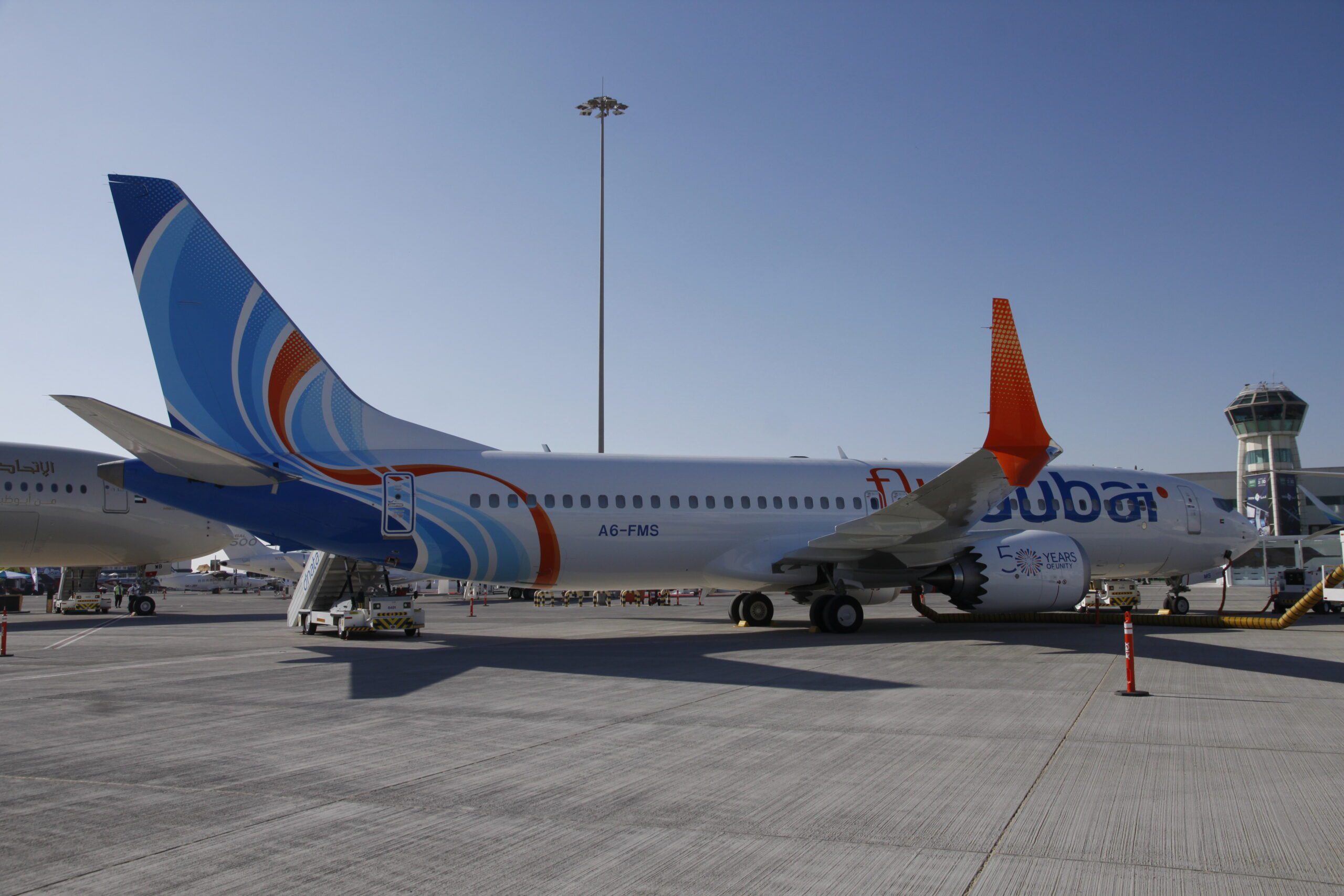
MG 6535 scaled
Flydubai is set to take delivery of the highest number of new aircraft in its history, expecting twenty Boeing MAX 8s from March onwards. They will assist to grow the network, although part will likely be used to replace some of the oldest 737-800s that are now ten years in the fleet. flydubai set for record aircraft deliveries in uncertain times.
The United Arab Emirates (UAE) carrier increased its fleet in 2021 from 51 to 59 aircraft, including 34 737-800s, 22 MAX 8s, and three MAX 9s. MAX deliveries were resumed last April after the type was re-certified by the UAE regulatory agency GAAC.
Flydubai has 161 more MAX on order. Last July, the carrier reduced its backlog by 65 aircraft, but CEO Ghaith Al Ghaith told AirInsight last November during the Dubai Airshow that an order is most likely in the coming years. “We keep our aircraft only for eight to nine years, so after a while, you run out of aircraft and you have to order aircraft. It’s just a matter of when is the best time to order aircraft.” He said that the MAX 10 is high on flydubai’s list, but the airline is also looking at the Airbus A320neo/A321neo.
The Arabian airline returned to profit in 2021 with an AED 841 million ($229 million) result compared to an AED 712.6 million loss in 2020. Total revenues more than doubled from AED 2.8 billion to AED 5.3 billion as passengers carried increased from 3.2 to 5.6 million. The re-opening of Dubai for expats and tourists in the second half of the year and Dubai Expo have stimulated demand to the region, something that Air Arabia acknowledged recently.
Opening of 22 new routes
Flydubai responded to the re-opening of Dubai by offering 22 new routes, of which thirteen were to destinations that weren’t served before. In the top 10 of its most popular destinations were Alexandria (Egypt), Bahrain, Doha, Bucharest, Karachi, Kathmandu, Male, Tbilisi, the newly opened route to Israel’s capital Tel Aviv, and Zanzibar. It also opened five seasonal routes, including two to Santorini and Mykonos in Greece.
Whereas business travel remains behind in most regions, flydubai saw an increase in Business Class bookings from 41 percent in 2019 to 51 percent last year on flights to Europe, and from 35 to 42 percent in both the Gulf region and to Africa. The codeshare with Emirates, which is now in its fifth year, saw increased numbers of connecting passengers, up 34 percent from 2020. More than 8.3 million passengers have now used codeshare flights on both flydubai and Emirates.
Its workforce is now slightly under 3.700, down by just over 100 from 2020 levels. As new aircraft join the fleet and the network grows, flydubai needs more staff. It is actively recruiting new staff but doesn’t specify how many.
In his 2022 outlook, Ghaith Al Ghaith says that “with the lifting of restrictions across our network and increasing demand for travel, we are cautiously optimistic about the year ahead notwithstanding the geopolitical situation and its potential effect on the pricing of commodities.” Last year, fuel costs were already up to seven percent from 2020 to 21.9 percent of all operating costs. With oil prices hitting record levels since the war in Ukraine, the carrier is to suffer more this year.
flydubai highly exposed to the Russian market
But of greater significance to flydubai is the situation in Russia. Before the war in Ukraine, the airline operated to 21 destinations in Russia and former CIS states. While it continues to operate in Moscow, services to cities like Sochi, Krasnodar, and Rostov-on-Don have been suspended until further notice. Or frequencies have been reduced, like those to Samara, Mineralny Vody, or Yekaterinburg.
Over the years, the Russian market has become key to flydubai. Although the UAE is still open to Russians and isn’t supporting the international sanctions, their effect on the economy in Russia and bank sanctions will most likely impact the options of its citizens to travel abroad.
Views: 2



